What is Calibration in Chemistry and Why is equipment calibration it Important? What is calibration in chemistry? Calibration in chemistry...
What is Calibration in Chemistry and Why is equipment calibration it Important? What is calibration in chemistry? Calibration in chemistry is a crucial step in ensuring the accuracy and reliability of measurements and instruments used in chemical analysis. It involves the comparison of the readings or values obtained from an instrument or measurement to a known standard in order to determine any discrepancies or errors. This process is essential in maintaining the quality and precision of analytical results, as well as ensuring the safety and reliability of chemical experiments and processes. In this article, we will explore the importance of calibration in chemistry and its impact on various aspects of chemical analysis.
Calibration in chemistry refers to the process of accurately measuring and adjusting instruments, tools, or equipment used in chemical analysis. This ensures that the measurements taken are reliable and accurate. Calibration is important in chemistry because it helps to maintain the quality and accuracy of scientific data. It also ensures that results are consistent and reproducible, which is crucial for making informed decisions and drawing valid conclusions in chemical research and analysis. Calibration also plays a critical role in maintaining the safety and regulatory compliance of chemical processes and instrument calibration solutions laboratory operations.
Understanding the Importance of Calibration in Chemistry
flow meter calibration services
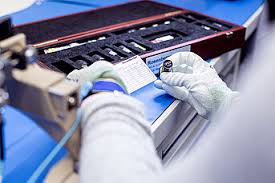
Calibration in chemistry is crucial for ensuring the accuracy and reliability of measurements and results. It involves comparing the measurements of an instrument to a known standard in order to detect and correct any deviations. Proper calibration helps to ensure that instruments and equipment are functioning correctly and producing accurate and consistent results. This is important for maintaining the quality of scientific research, as well as for meeting regulatory and quality control standards in various industries such as pharmaceuticals, food and beverage, and environmental monitoring. Without proper calibration, there is a risk of producing misleading or inaccurate data, which can have significant implications in scientific electrical calibration lab research and various industrial processes. Therefore, understanding the importance of calibration and regularly performing it is essential for ensuring the validity and integrity of chemical measurements and analyses.
The Fundamentals of Calibration in Chemistry
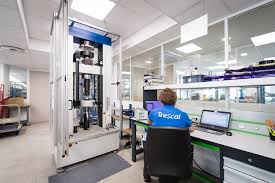
The fundamentals of calibration in chemistry involve the process of comparing measurements taken with a specific instrument to known standards in order to ensure accuracy and reliability. This is essential for producing accurate and precise results in chemical analysis and experimentation. Calibration methods may include the use of reference materials, standardized solutions, and calibration curves to account for potential sources of error such as instrument drift or inherent variability. Proper calibration is critical for obtaining valid and reproducible data in chemical research and analysis.
A Guide to Calibration Techniques in Chemistry
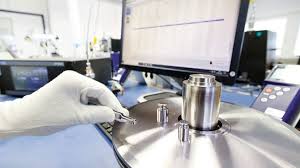
A Guide to Calibration Techniques in Chemistry is a comprehensive reference book that covers various calibration methods used in the field of chemistry. The book includes detailed explanations of different calibration techniques, their principles, and practical applications. It also provides insight into best practices and tips for successful calibration in various analytical instruments and chemical processes. This guide is valuable for chemists, researchers, and professionals in the field who require accurate and reliable calibration of instruments and experimental setups.
Calibration Procedures in Chemistry: A Step-By-Step Approach
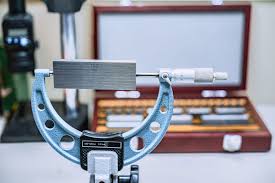
Calibration Procedures in Chemistry: A Step-By-Step Approach is a comprehensive guide that covers the fundamental principles of calibration in the context of chemical analysis. It provides detailed instructions on how to calibrate equipment and instruments used in chemical laboratories, ensuring accuracy and reliability in experimental results. The book outlines the step-by-step procedures for calibration, including the selection of appropriate standards, the preparation of calibration curves, and the validation of calibration results. It also discusses common sources of error in calibration and provides practical tips for troubleshooting. This resource is invaluable for students, researchers, and professionals working in the field of chemistry.
Precision and Accuracy: The Role of Calibration in Chemistry
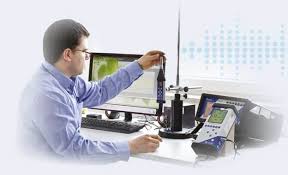
Precision and accuracy are crucial in the field of chemistry as they ensure that measurements and experimental results are reliable and reproducible. Calibration plays a fundamental role in achieving precision and accuracy by ensuring that the measuring instruments used in experimental setups are properly adjusted and aligned to traceable standards. Calibration involves comparing the readings of a device to known standards and making necessary adjustments to eliminate any potential sources of error. In chemistry, this process is essential for obtaining accurate and reliable data, especially when dealing with sensitive experiments or analyses. Properly calibrated instruments provide the necessary confidence in the results obtained, ultimately contributing to the overall quality of scientific research and analysis in the field of chemistry.
The Significance of Calibration in Analytical Chemistry
Calibration in analytical chemistry is significant as it ensures the accuracy and reliability of the results obtained from analytical instruments. It involves comparing the measurements of an instrument to known standards to identify and correct any potential errors. Without proper calibration, the accuracy of analytical results may be compromised, leading to incorrect conclusions and decisions. Calibration also helps in maintaining the quality and consistency of analytical data, which is crucial for meeting regulatory requirements and ensuring the validity of scientific findings. Overall, proper calibration is essential for ensuring the trustworthiness of analytical measurements in various fields such as environmental monitoring, pharmaceuticals, food testing, and research.
Calibration Standards: Ensuring Accurate Results in Chemistry
Calibration standards are reference materials used to ensure the accuracy and reliability of measurements in chemistry. They are used to calibrate instruments and analytical methods, and to verify the accuracy of results obtained from testing samples. Calibration standards are critical for maintaining the quality and consistency of data in analytical chemistry, environmental testing, and other fields. There are different types of calibration standards, including certified reference materials, secondary standards, and in-house standards. Certified reference materials are produced and certified by accredited organizations to ensure their accuracy and traceability to international measurement standards. Secondary standards are calibrated against certified reference materials and are used for routine calibration and quality control purposes. In-house standards are prepared and validated by laboratories for specific analytical methods and instruments. Calibration standards play a crucial role in ensuring the accuracy and reliability of analytical measurements. By using these reference materials, laboratories can minimize measurement uncertainties, identify and correct instrument deviations, and maintain the traceability of their results. This is essential for producing reliable data for research, regulatory compliance, and quality control in various industries.
Common Challenges in Calibration for Chemistry Laboratories
Calibration in chemistry laboratories poses several challenges, including ensuring the accuracy and precision of equipment and instruments, maintaining traceability to recognized standards, and addressing environmental factors that can affect measurements. Additionally, establishing proper testing and calibration procedures, as well as verifying the competency of personnel performing the calibrations, are ongoing challenges. Other common issues include managing the frequency and scheduling of calibrations, documenting and tracking calibration data, and addressing any deviations or non-conformities that may arise during the process. Overall, maintaining an effective and compliant calibration program in chemistry laboratories requires careful attention to detail and adherence to best practices.
Calibration Equipment and Tools for Chemistry Experiments
Calibration equipment and tools for chemistry experiments are essential for ensuring the accuracy and reliability of measurements. These tools include calibration weights, thermometers, pH meters, and pipettes, among others. Calibration equipment is used to verify the accuracy of laboratory instruments and to adjust them as needed. Properly calibrated instruments are crucial for obtaining precise and valid experimental results in chemistry. It is important to regularly calibrate equipment to maintain the quality and integrity of the experimental process.
The Future of Calibration in Advancing Chemistry Research
Calibration is a critical component in advancing chemistry research as it ensures the accuracy and reliability of measurements and experimental results. The future of calibration in chemistry research will likely involve the development of more advanced and precise calibration techniques, as well as the integration of automation and digitalization to streamline the process. Advancements in technology, such as the use of machine learning and artificial intelligence, may also play a key role in the future of calibration by allowing for real-time data analysis and pattern recognition. This could lead to more efficient calibration processes and improved overall quality control in chemistry research. Additionally, as the field of chemistry continues to evolve, the need for calibration standards and best practices will become increasingly important. This will require collaboration among researchers, industry experts, and regulatory bodies to establish and maintain high standards for calibration in chemistry research. Overall, the future of calibration in advancing chemistry research holds great potential for driving innovation and improving the accuracy and reliability of experimental results. By embracing new technologies and best practices, the field of chemistry can continue to make significant strides in advancing scientific knowledge and understanding.


